Top 7 Interesting Facts about Uranus
Uranus is an intriguing gas giant with ice on its surface. The third-largest planet in terms of size, the fourth-largest in terms of mass, and one of the least ... read more...dense objects in our Solar System is Uranus, which is the seventh planet from the Sun. Intriguingly, it is the only planet in the Solar System whose name derives from a Greek (as opposed to a Roman) tale. And there are many interesting facts about Uranus that Toplist sure that you are want to know. Let's follow Toplist to discover them.
-
The sun warms the planets in our solar system. The distance between Earth and the sun, roughly 100 million miles, provides the ideal temperature for life. You might think, then, that the coldest planet in the solar system would be Neptune, as it is the farthest away from the sun's warmth. Neptune is an incredible three billion miles away from the sun.
Despite being one billion miles closer to the sun than Neptune, Uranus is the coldest planet, not Neptune. According to NASA, the coldest temperature ever recorded in the solar system was on Uranus, where it was a very chilling minus 371 degrees Fahrenheit (minus 224 degrees Celsius). Naturally, Neptune is still incredibly cold, with a typical temperature of minus 353 degrees Fahrenheit (minus 214 degrees Celsius), but Uranus is colder.It has nothing to do with Uranus's distance from the sun that makes it so chilly. Uranus has turned onto its side millions of years ago when a large object struck the planet violently. Even today, Uranus still revolves around the sun on its side. Some of the heat that was contained inside Uranus was also released as a result of the collision.
Planets still contain heat that was present during their formation. Smaller rock fragments colliding together create planets, which are built up piece by piece over many millions of years. The globe becomes somewhat hotter with each collision of these rocks. The same way that your hands will become warm if you clap them together for an extended period of time, planets also experience this. Neptune has been able to retain more of its heat since it wasn't struck by a massive asteroid like Uranus did.
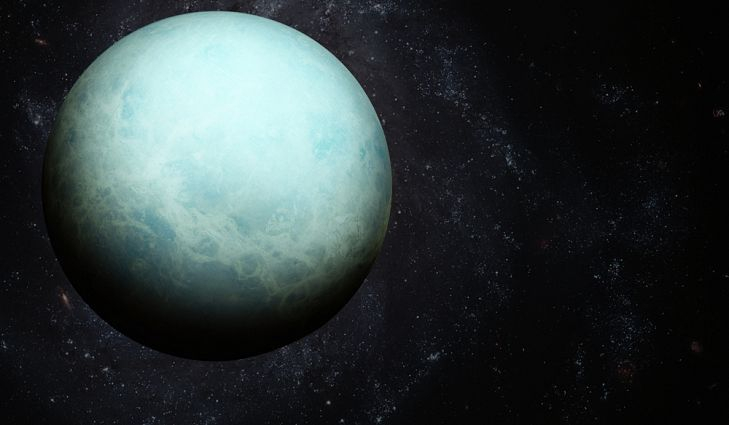
Photo: Pinterest 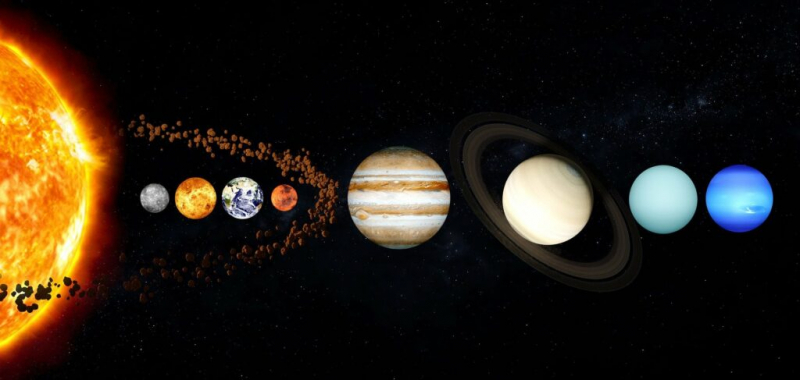
Photo: learningmole -
In the Solar System, every planet rotates on its axis with a tilt like that of the Sun. Many planets have an axial tilt, which causes one of their poles to be slightly tilted toward the Sun. For instance, the Earth's rotational axis is inclined 23.5 degrees away from the plane of the Sun. Mars and Earth both experience seasonal shifts because of their identical 24-degree tilts.
But Uranus' axial tilt is a startling 99 degrees! To put it another way, Uranus is tilted so much more than the other planets in the solar system that it effectively revolves around the sun on its side, with its spin axis almost pointing at the star. This peculiar orientation could be the result of a collision with a planet-sized body or numerous smaller bodies not long after it was formed. According to a 2018 study, the worlds that collided may have been twice as big as Earth.
Extreme seasons are created by this peculiar tilt and continue for around 20 years. This implies that the sun shines directly over each pole for about a quarter of the Uranian year, which is equivalent to 84 Earth years, leaving the other half of the planet to endure a protracted, dark, and icy winter.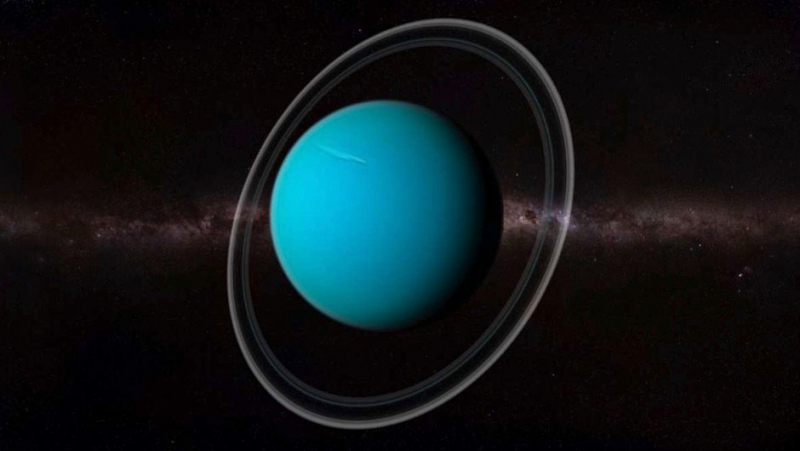
Photo: sciencefocus 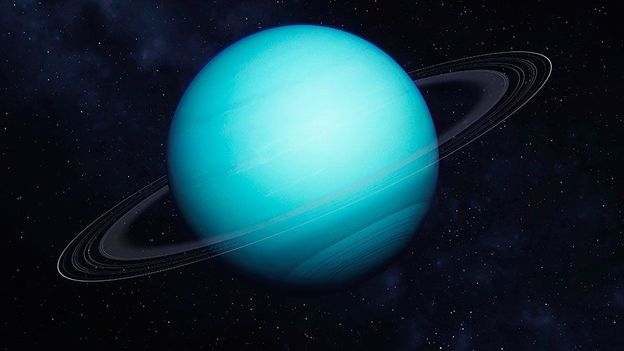
Photo: bbc -
Following Saturn's rings, Uranus' were the first to be observed. They were an important discovery because they made astronomers realize that rings are a characteristic of planets generally, not just of Saturn.
Two rings are present on Uranus. The outer system of rings, found by the Hubble Space Telescope, consists of two more distant rings that are brilliantly colored: one red and one blue. The inner system of rings is primarily composed of narrow, black rings. There are 13 recognized rings around Uranus, according to scientists.
It is thought that the rings are fairly young and did not develop along with Uranus. The material in the rings may have originally been a piece of a moon (or moons) that were broken apart by incredibly fast collisions. Only a few particles survived from the large amount of debris that was created as a result of those strikes, and they were located in stable zones that matched the locations of the current rings.
According to a 2016 study, Pluto-like dwarf planets that erred by getting too close to the giant planets in the past may be the source of the rings on Uranus, Saturn, and Neptune. Due to the immense gravitational pull of the planets, these dwarf planets were shattered and are now only left as rings.
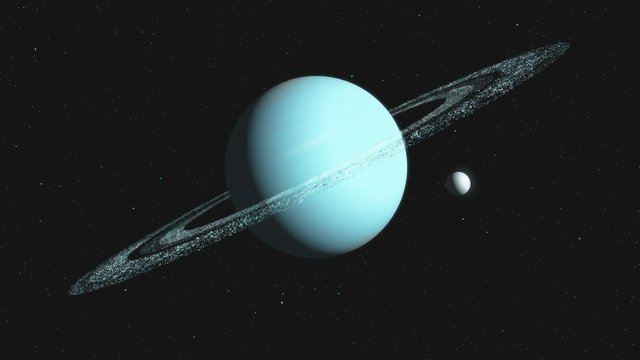
Photo: stock.adobe 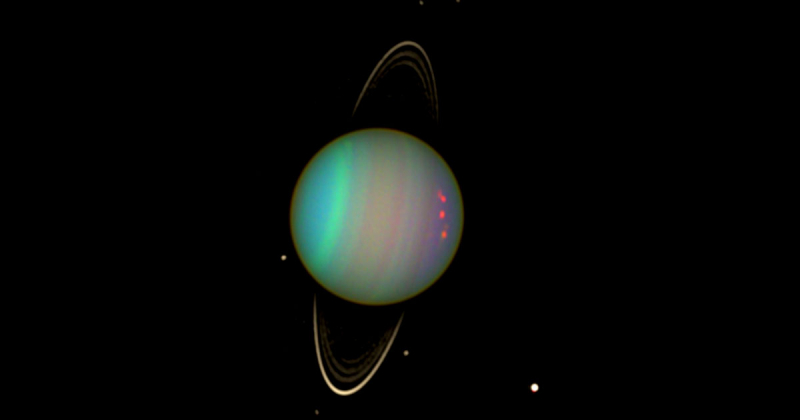
Photo: futurism -
Neptune is pretty... ordinary in comparison to Jupiter and Uranus. The violent and tumultuous nature of Jupiter and Saturn's atmospheres is evident when one observes the swirling clouds and eddies that run across their surfaces. In contrast, Uranus appears as a pale, homogeneous shade of blue. However, newer telescopes that can observe planets in other wavelengths (such as infrared) and the Voyager 2 spacecraft's flyby have made several important discoveries possible.
For instance, the atmosphere of Uranus has strong zonal winds that can reach speeds of up to 250 m/s (900 km/h, 560 mph) and produce anticyclonic storms similar to Jupiter's Great Red Spot (sometimes referred to as the "Dark Spot"). It also includes different cloud patterns in the two hemispheres, some of which last for only a few hours and others of which can last for years or even decades.
The presence of some "ices" in Uranus' atmosphere, though, is possibly the most intriguing discovery. Methane (CH), which is responsible for Uranus' aquamarine color, is the third-most prevalent element in the planet's atmosphere. Other hydrocarbons, including as ethane, acetylene, methylacetylene, and diacetelyne, are also present in trace amounts and are thought to have been produced as a result of methane's interaction with solar ultraviolet radiation (aka. photolysis).The layers of Uranus' atmosphere also contain verified traces of water, ammonia, carbon dioxide, carbon monoxide, and hydrogen sulfide. The phrase "ice giant" refers to the fact that they are suspended in an icy state as a result of the great cold.
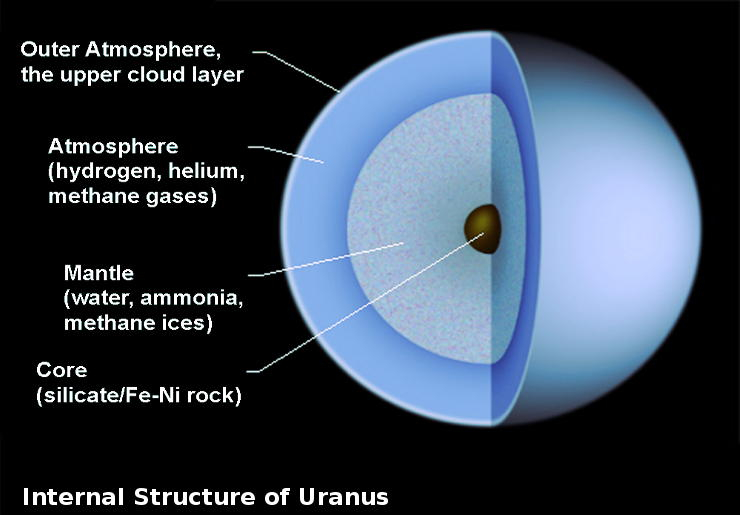
Photo: toughsf.blogspot 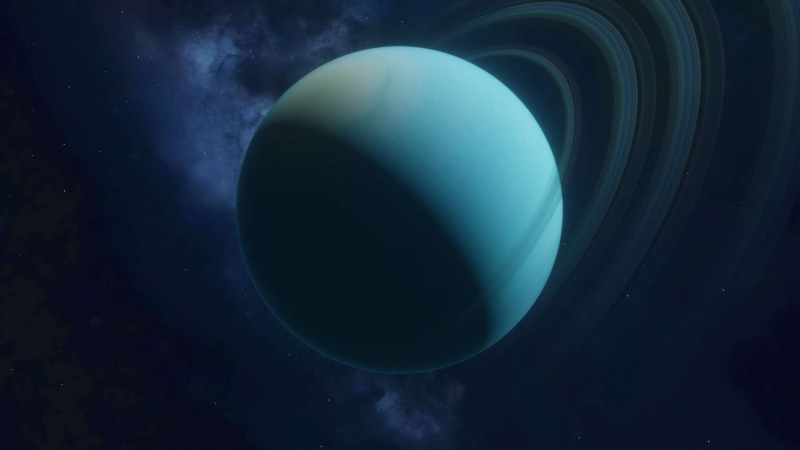
Photo: universemagazine -
There are moons on Uranus, much like on the other large planets. One of the interesting facts about Uranus is there are now 27 moons known to exist, according to astronomers. These moons are typically small and erratic, though. Even if you added up all of their masses, Triton, Neptune's largest moon, would still have a mass that is less than half that. While Triton is thought to have been captured, the larger moons of Uranus are all thought to have formed from an accretion disk that ringed the planet.
The biggest moons of Uranus are Titania, Miranda, Ariel, Umbriel, and Miranda in order of size. Miranda's diameter and mass are 472 km and 6.7 1019 kg, while Titania's are 1578 km and 3.5 1021 kg. These moons all have low bond and geometric albedos, making them all exceptionally dark. The most brilliant is Ariel, while the darkest is Umbriel.
Each one is made of nearly equally of rock and ice, with Miranda being mostly built of ice that may also contain ammonia and carbon dioxide. The rocky material is thought to be constructed of carbonaceous material. They are thought to have distinct compositions, with an icy mantle enclosing a rocky core. It is thought that oceans with liquid water may occur near the core/mantle border in the cases of Titania and Oberon.The remaining moons of Uranus are all connected to the planet's ring system, which is thought to have formed when one or more small inner moons broke apart. These moons are either located within Miranda's orbit or extend beyond Oberon. They are all made of ices that have been tainted with a dark substance, which is probably an organic molecule that has been darkened by UV ray exposure.
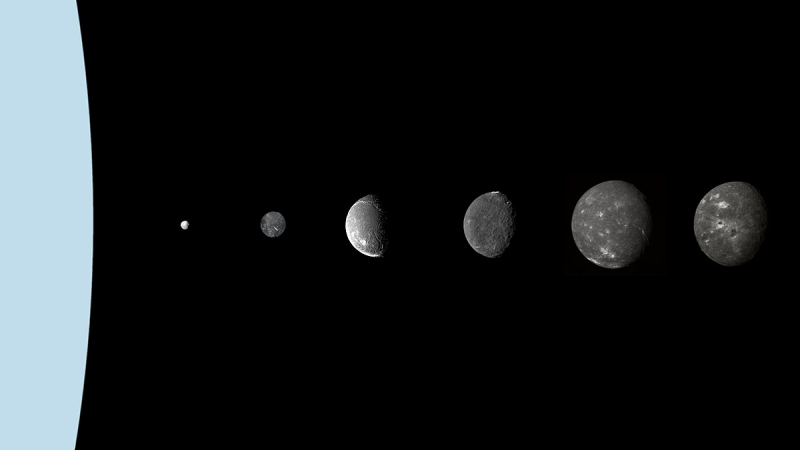
Photo: wikipedia 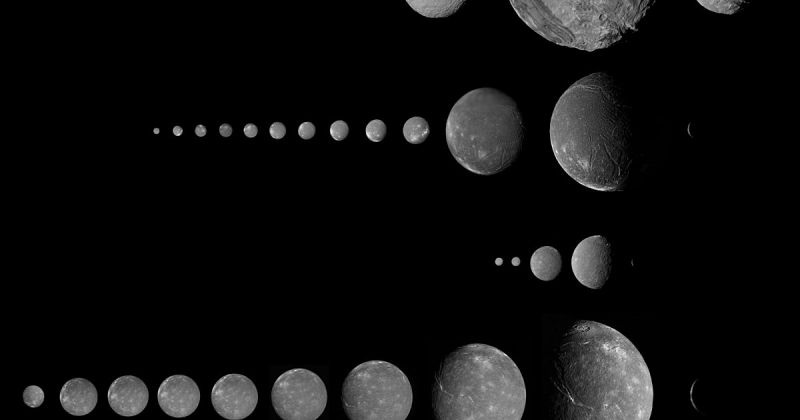
Photo: planetary -
The majority of planets are visible to the unaided eye and have been studied since antiquity. After the advent of the telescope, Uranus was the first planet to be identified. John Flamsteed, who believed it to be a star in the constellation Tauri, made the first observation of it in 1690. But astronomers didn't understand it was a planet until Sir William Herschel made his observations in 1781.
On March 13, 1781, Herschel was making observations when he noticed a strange object in the sky, which he initially mistook for a star. A few days later, he saw it once more, but this time it had relocated. From its motion, he deduced that it was too close to Earth to be a star and assumed that it must instead be a comet. He told Maskelyne, who, after making several vain attempts to find the object himself, carefully examined its orbit. A closer look revealed it wasn't a comet at all, but rather a previously undiscovered planet.
Herschel swiftly rose to fame, both inside and outside the scientific community. He received the coveted Copley Medal from the Royal Society in November 1781. Herschel cleverly named the new planet Georgium Sidus ('Georgian Star') after him, which pleased King George III, who also provided Herschel a pension that allowed him to give up music and focus solely on astronomy. Eventually, the astronomical community officially settled on the name Uranus, the Latinized version of the Greek god of the sky, and Ouranos, the name stuck.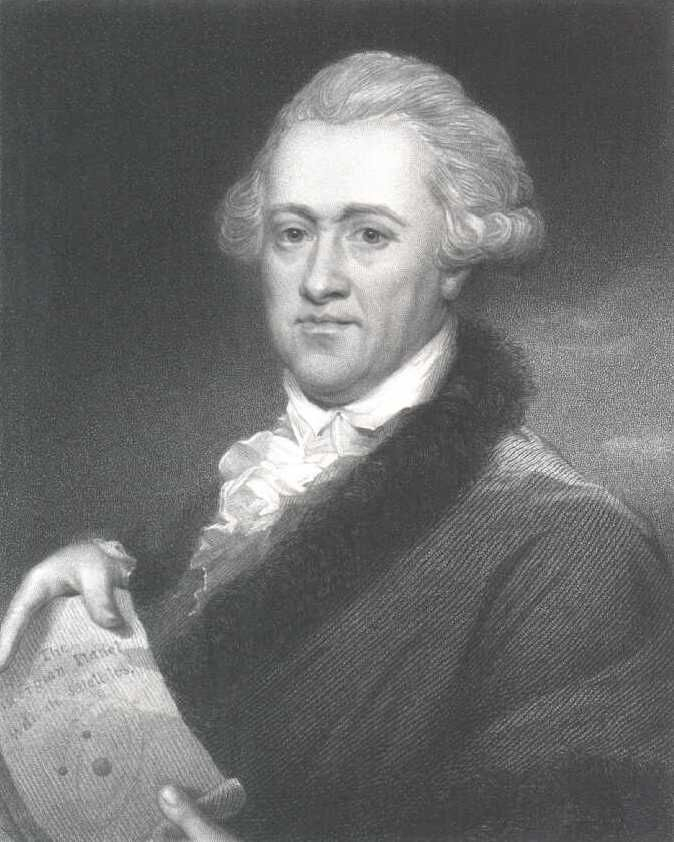
Photo: space 
Photo: universemagazine -
In the entire history of space travel, one of the interesting facts about Uranus is, only one spacecraft has ever come quite close to Uranus. On January 24th, 1986, NASA's Voyager 2 made its closest approach to Uranus, passing just 81,000 kilometers from the planet's cloud tops. The gas/ice giant and its moons were captured in tens of thousands of pictures before the spacecraft accelerated toward its next destination, Neptune.
There are no present plans to launch any more spacecraft toward Uranus, and none have ever been. During a mission extension planning phase in 2009, the prospect of transporting the Cassini spacecraft from Saturn to Uranus was considered. The Uranian system would have taken Cassini around 20 years to reach after leaving Saturn, therefore this never materialized. Although there are a number of ideas being thought about, none have yet been approved.
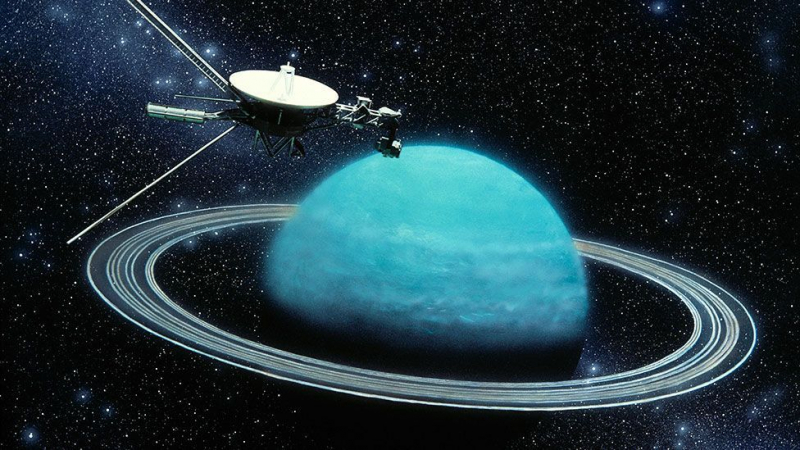
Photo: bbc 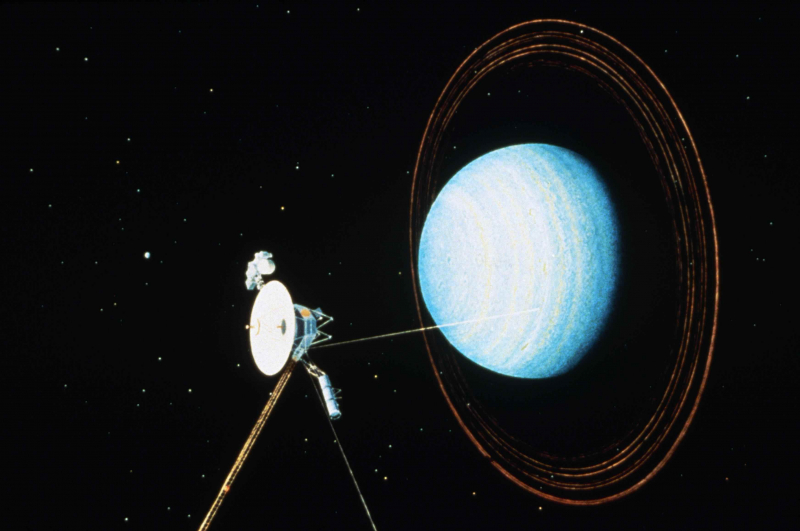
Photo; thoughtco




























